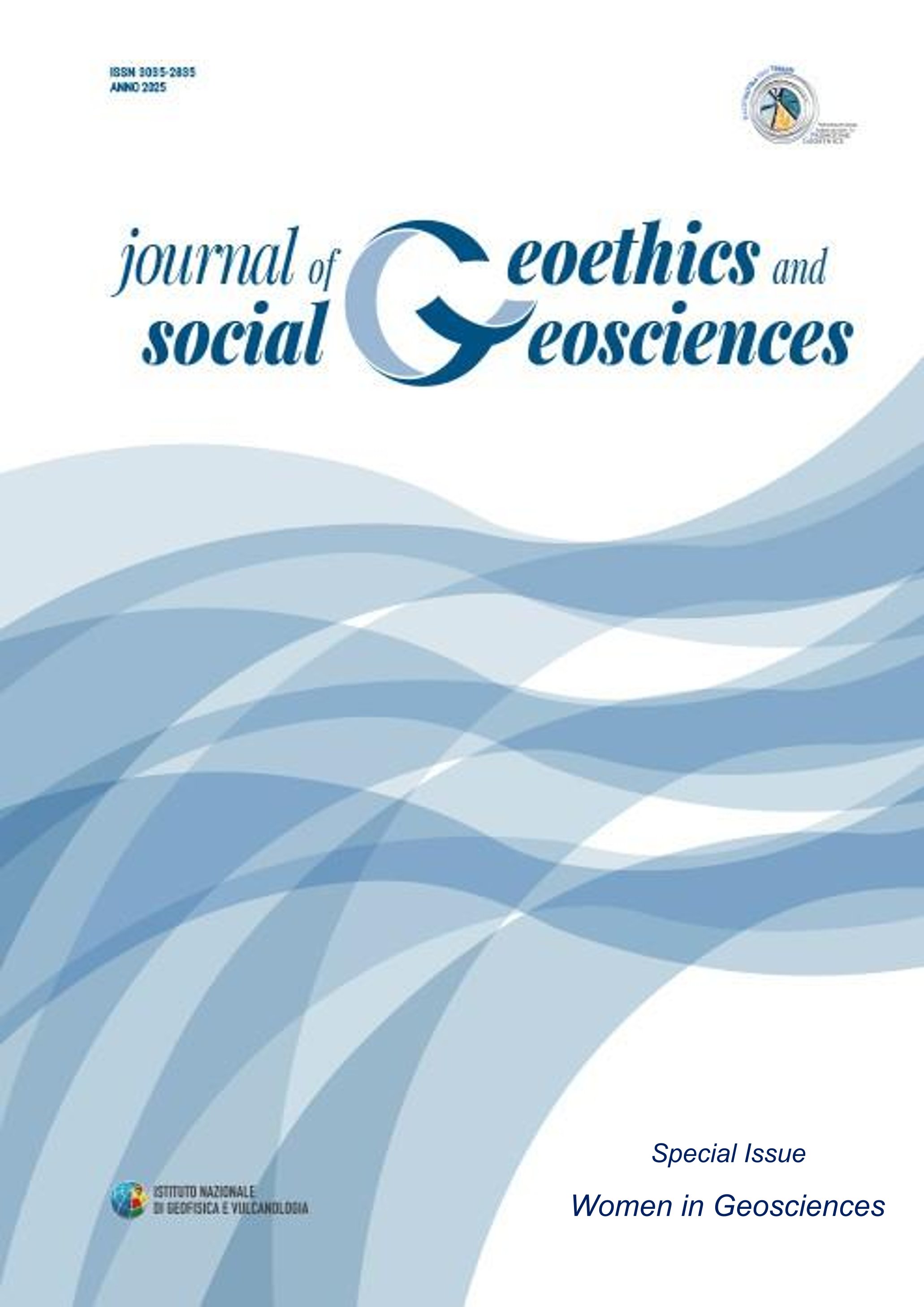State of the art on gender equality at the Geological Survey of Italy
Main Article Content
Abstract
This study investigates gender distribution in different roles and positions within the Department for the Geological Survey of Italy (GEO) and compared with other European Geological Surveys (EGS) and Italian geologists. A specific focus is dedicated to fieldwork, an activity traditionally perceived as male dominated. Through the analysis of employment data from 2010 to today, survey results, and European reports, the concentration of women and men in different occupations (horizontal segregation) and the uneven distribution of genders in leadership positions (vertical segregation) are assessed. Despite a slight increase in the number of female leaders in recent years, women remain underrepresented in technical staff roles at GEO, with percentages stalling around 40%, consistent with broader European trends. The study also highlights a persistent gendered division in private workload: women are more likely to take parental leave, care for relatives, and devote free time to unpaid care work. Initiatives introduced at GEO, such as agile work and support during maternity leave periods, have improved life-work balance, although long-term effects require further evaluation. Additionally, the research points out the invisibility of gender variability in official statistics: we argue this constitutes a specific type of segregation and propose a non-binary approach to data collection. Addressing all types of segregation requires targeted actions, including systematic, necessarily participatory, collection of gender-disaggregated data on both public and private workload, and promotion of positive workplace practices. This approach would help reduce gender gaps and foster a better working environment for all employees, regardless of gender.
Article Details
Section

This work is licensed under a Creative Commons Attribution 4.0 International License.

